

 STUART JORDAN looks at the history of this cantilever bridge in Scotland.
STUART JORDAN looks at the history of this cantilever bridge in Scotland.
It was down to design rather than fate that the fourth bridge that I’m looking at in this series is the Forth Bridge, which crosses the Forth River upstream to the west of Edinburgh – adjacent to the Forth Road Bridge and Queensferry Bridge.
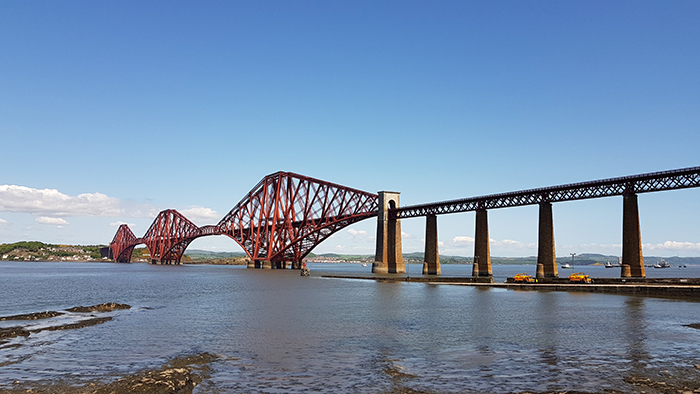
The Forth Rail Bridge.
Like the site of many future bridges, a ferry once existed on the site of the Forth Bridge – hence North and South Queensferry, the towns on each bank. Two tunnels were originally proposed, one for traffic in each direction, but this idea was soon rejected. The engineer Thomas Bouch was brought in to design a bridge over the Forth as a joint venture between the North British Railway and the Edinburgh and Glasgow Railway.
However, on the night of 28th December 1879, Bouch’s reputation was destroyed. High winds caused the central span of the Tay Bridge, which Bouch designed, to give way and a train carrying 75 people plunged into the river killing all onboard. The plans that Bouch had drawn up were thrown out and the NBR and E&GR looked to other engineers to take on the job.
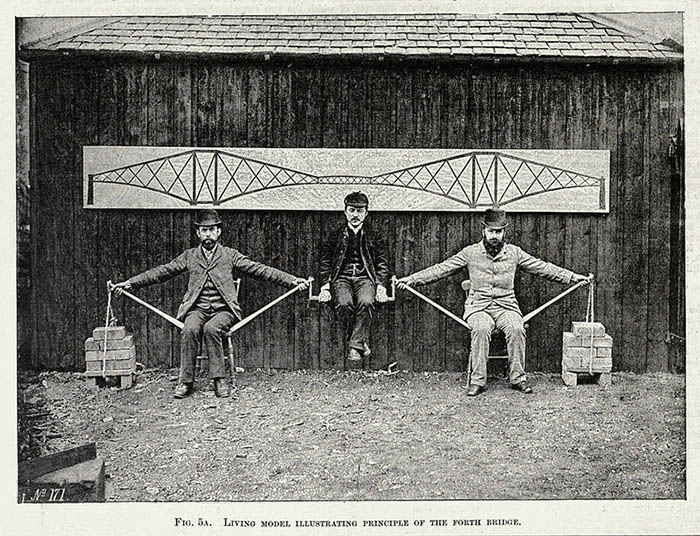
A demonstration of the cantilever method.
The engineers chosen were Sir John Fowler and Sir Benjamin Baker, who had previously worked together on the Metropolitan and Underground Railways in London, as well as designing stations around the country. Their design was for an 8094ft long cantilever bridge, with the deck 150ft above the river. Cantilevers are structures that project out horizontally into space, with trusses to hold it rigid.
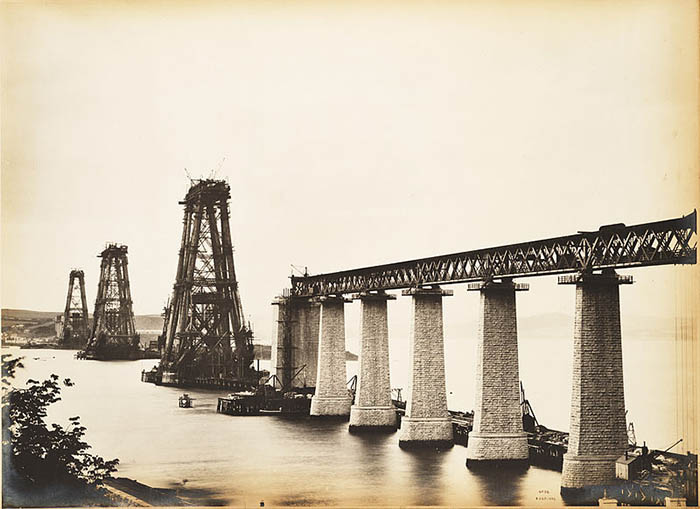
The Forth Bridge was the first large steel structure in Britain and used around 58,000 tonnes of steel from Wales and Scotland to construct. The Bill of Parliament for the building of the bridge passed on 19th May 1882 and construction began.
A small town of houses for workers, workshops, and shops grew up near to South Queensferry. A telephone cable was laid across the Forth so that the work parties on each side of the river could easily communicate with each other.
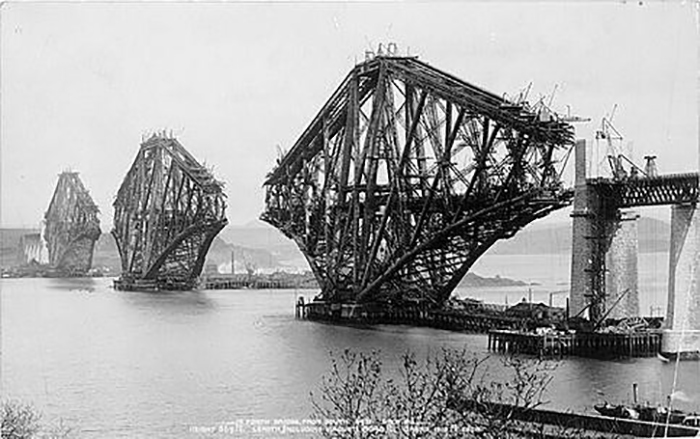
Steel and granite for construction was brought in by train. Each of the three cantilever towers was to be held up by four concrete piers each. The foundations for these piers were built using caissons and cofferdams to hold the water at bay. The parts for the cantilevers themselves were made in workshops on the southern bank, and then assembled using cranes and hydraulic riveters.
The bridge was completed in December 1880 and tested in 1890. Two trains, each made up of three locomotives pulling 50 coal wagons, drove onto the bridge and the same time. Even though this was a massive weight, much heavier than the expected usual amount, the measurements for deflection under load were as expected. The first crossing for normal traffic was on 24th February 1890, and the Duke of Rothsay (later King Edward VII) formally opened the bridge on 4th March. The Forth Bridge was, when built, the longest single-span cantilever bridge in the world. It held this record for just 29 years, when the Quebec Bridge in Canada was built in 1919.
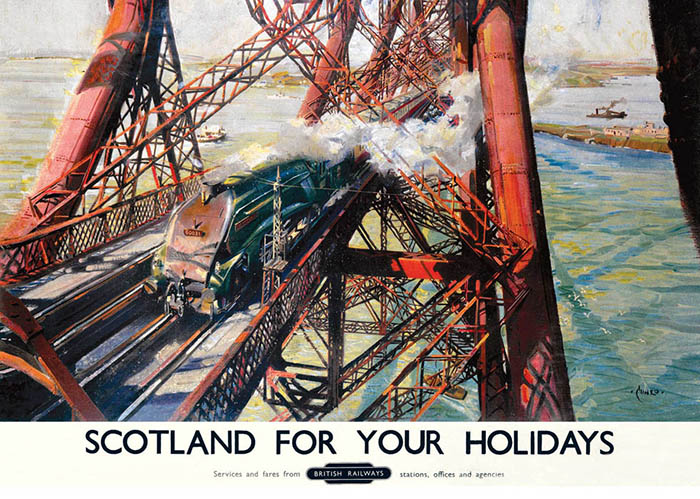
The Forth Bridge featuring on a British Railways poster. The bridge became an important marketing tool right from when it opened.
The Forth Bridge was also the cause of one of the sensationalist news stories of the day. Now that there was a crossing in the east of Scotland, trains from London Euston to Aberdeen no longer had to make the long journey 13 hour up the west coast. Railway companies competed at who could make the journey fastest, and at the peak of the so called ‘Race to the North’, trains travelling from London Kings Cross to Aberdeen in just 8½ hours.
A common phrase for a never-ending task is ‘painting the Forth Bridge’, as it was thought that as soon as the end of the bridge had been reached, the painters would have to start again at the other end. This was erroneous as although the bridge had a full-time maintenance crew, painting was only carried out when it was needed – and on the most weathered parts. In 2011 the Forth Bridge was painted with a specially formulated paint, which means that it should not need another coat until 2036.